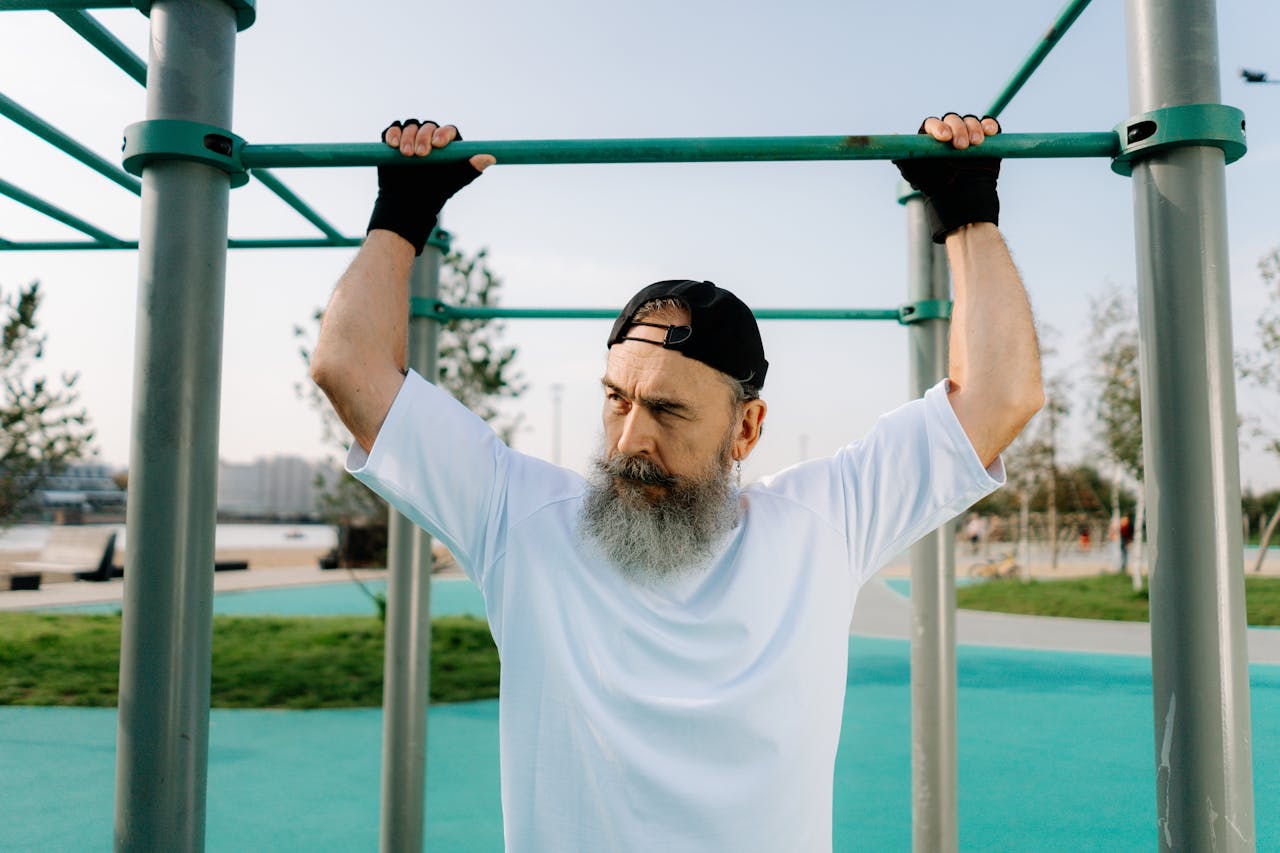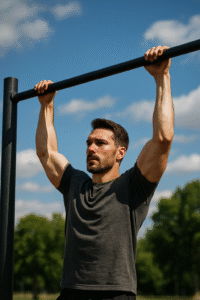Last Updated on October 3, 2025 by shawnshealth
Discover 12 variations of different pull ups, from beginner to advanced, including Australian pull ups, eccentric pull ups, and one arm pull ups!
Introduction to Different Pull Ups: Beginner to Advanced
When it comes to building upper body strength, few exercises rival the versatility and effectiveness of doing different pull ups. Whether you’re a beginner looking to build foundational strength or an advanced athlete aiming to push the limits, understanding the different pull up variations can help you tailor your workout for optimal results. In this guide, we will explore 12 different pull ups, progressing from beginner-friendly options to expert-level challenges.
From my personal experience I have observed that guys (including myself at times) are often more focused on chest, shoulder and triceps while the only pulling movement they do are barbell curls for biceps. For functionality a case could be made that if you were to choose one or the other that pulling movements would be more practical: climbing, picking things up, carrying, etc. Best case is that you make sure you incorporate both. I personally have pull days and push days. I certainly enjoy doing push-ups more than pull-ups, but both are very important to keep a well-rounded and strong body. So do both!
Happy training!
🛒 Quick Tip: Looking for fitness gear? Browse top-rated equipment on Amazon to power up your workouts fast 💪
As an Amazon Associate, I earn from qualifying purchases. This means I may receive a commission if you purchase through links on this site, at no extra cost to you.
Why Try Different Pull Ups?
- Target various upper body muscles.
- Improve grip and shoulder strength.
- Break through training plateaus.
- Enhance overall pulling performance.
How Do Different Pull Ups Benefit Your Training?
- Increase strength through varied movement patterns.
- Develop balanced muscle growth.
- Adapt to different fitness levels.
- Prevent overuse injuries by changing load angles.
When Should You Progress to Different Pull Ups?
- When bodyweight pull ups feel too easy.
- To overcome strength plateaus.
- After mastering basic pull up form.
- When seeking new training challenges.
Check out this introductory video how to get your first pull up from Jeremy Ethier!
Table of Contents
Medical Disclaimer: This content is for informational purposes only. Consult a healthcare professional before making any health or fitness changes.
Amazon Affiliate Disclaimer: As an Amazon Associate, I earn from qualifying purchases.
💪 Want to build real-world strength that actually translates to life outside the gym? Explore our deep dive on functional “farmer” strength and learn how to train for grip, grit, and ground-level power.
Beginner Pull Up Variations
1. Australian Pull Ups
Also known as inverted or horizontal bar rows, Australian pull ups are perfect for beginners.
- Description: This exercise involves pulling your body up from a lower angle, which reduces the weight lifted.
- Benefits: Builds foundational strength in the back, shoulders, and arms.
- How to Do It: Lie beneath a low bar and grab it with an overhand grip. Keep your body straight and pull your chest towards the bar.
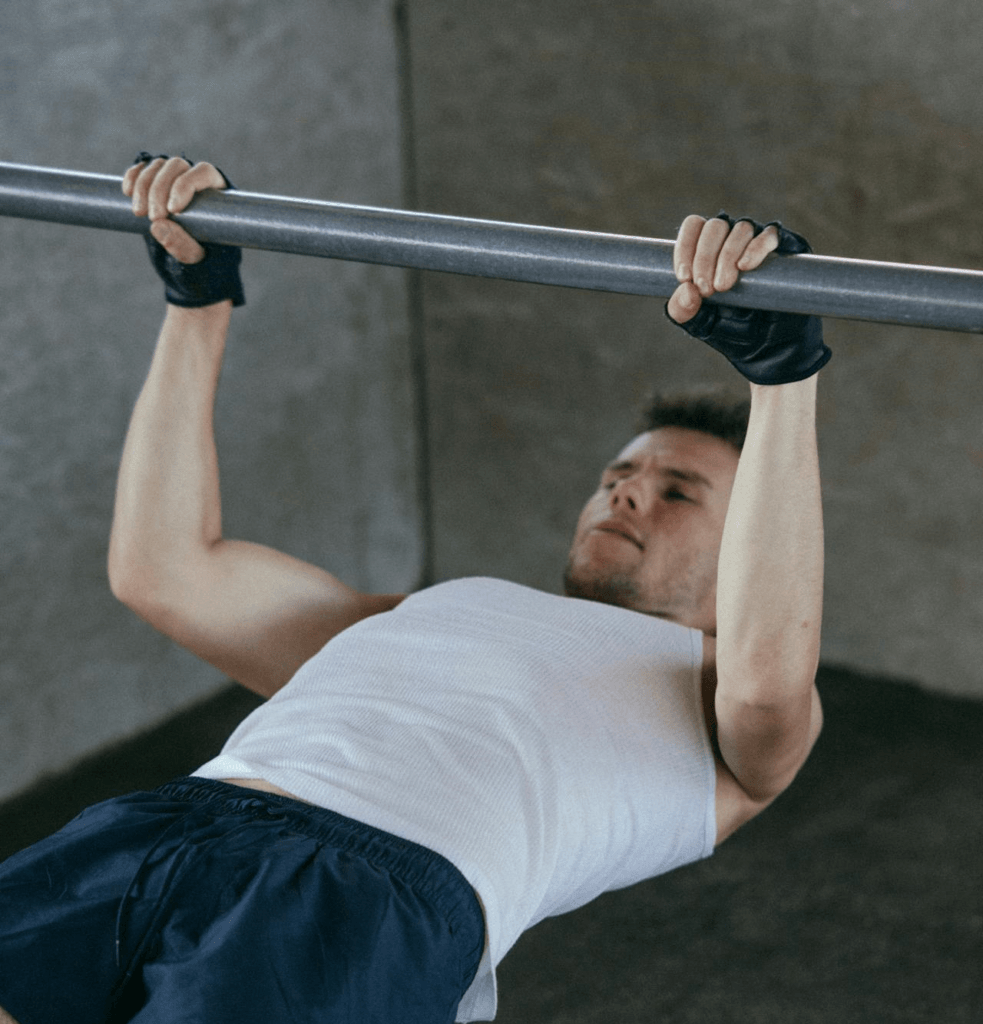
2. Eccentric Pull Ups
- Description: Focuses on the lowering phase of the pull up to build strength.
- Benefits: Trains muscles to handle your body weight and prepares you for full pull ups.
- How to Do It: Jump or step to the top position of a pull up and slowly lower yourself down.
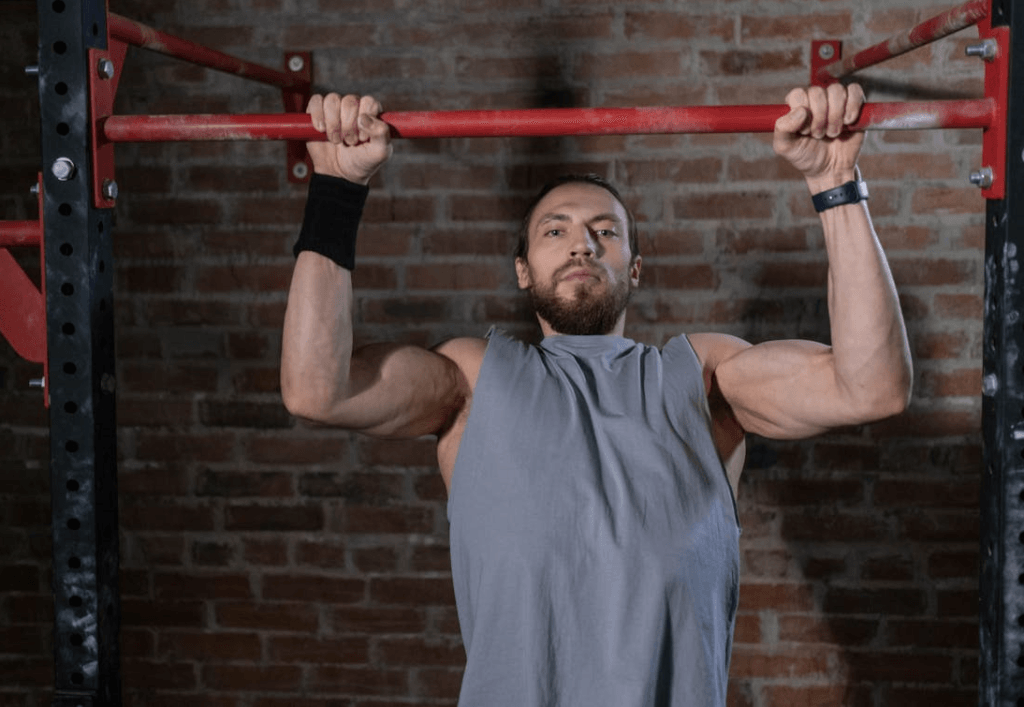
3. Pull Ups for Beginners
- Description: Basic pull ups performed with assistance (such as resistance bands).
- Benefits: Gradually introduces your body to the mechanics of a full pull up.
- How to Do It: Loop a resistance band over a pull up bar, place one or both feet in it, and pull yourself up.
🏋️♂️ New to bodyweight training? Kickstart your journey with our Beginner Calisthenics guide—packed with simple moves, smart progressions, and tips to help you build strength fast without any equipment.
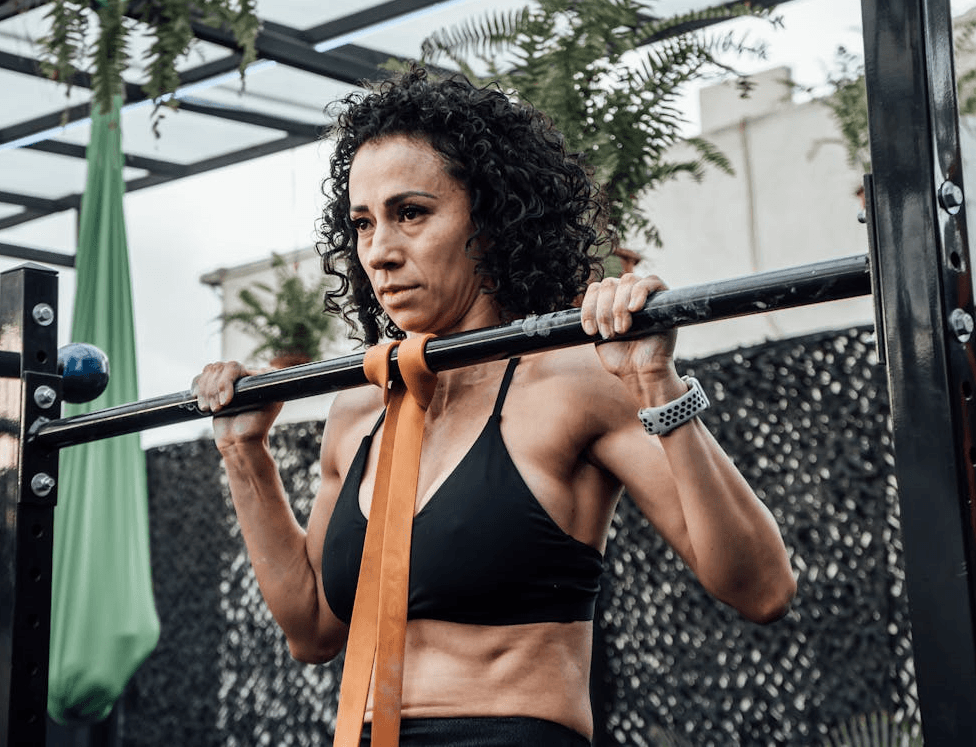
Intermediate Pull Up Variations
4. Chin Ups (Bicep Pull Ups)
- Description: A close-grip variation that emphasizes the biceps.
- Benefits: Builds strength in the biceps and lats.
- How to Do It: Use an underhand grip, pull yourself up until your chin clears the bar, and lower back down.

5. Back Pull Ups
- Description: A traditional pull up that focuses on activating the back muscles.
- Benefits: Targets the lats, traps, and rhomboids.
- How to Do It: Perform a standard pull up with a wider grip to emphasize back engagement.

6. Towel Pull Ups
- Description: Uses a towel to increase grip strength and engage forearms.
- Benefits: Strengthens grip and forearms, making it excellent for climbers and martial artists.
- How to Do It: Drape a towel over a pull up bar, grab both ends, and pull yourself up.
🧼 Want to master towel pull-ups and build serious grip strength? Watch this detailed video tutorial to learn proper form, setup tips, and beginner-friendly variations that work anywhere.
Advanced Pull Up Variations
7. Archer Pull Ups
- Description: Involves pulling up to one side at a time, creating an asymmetrical load.
- Benefits: Prepares you for one arm pull ups and increases unilateral strength.
- How to Do It: Pull up while shifting your body weight to one arm, extending the other arm out straight.
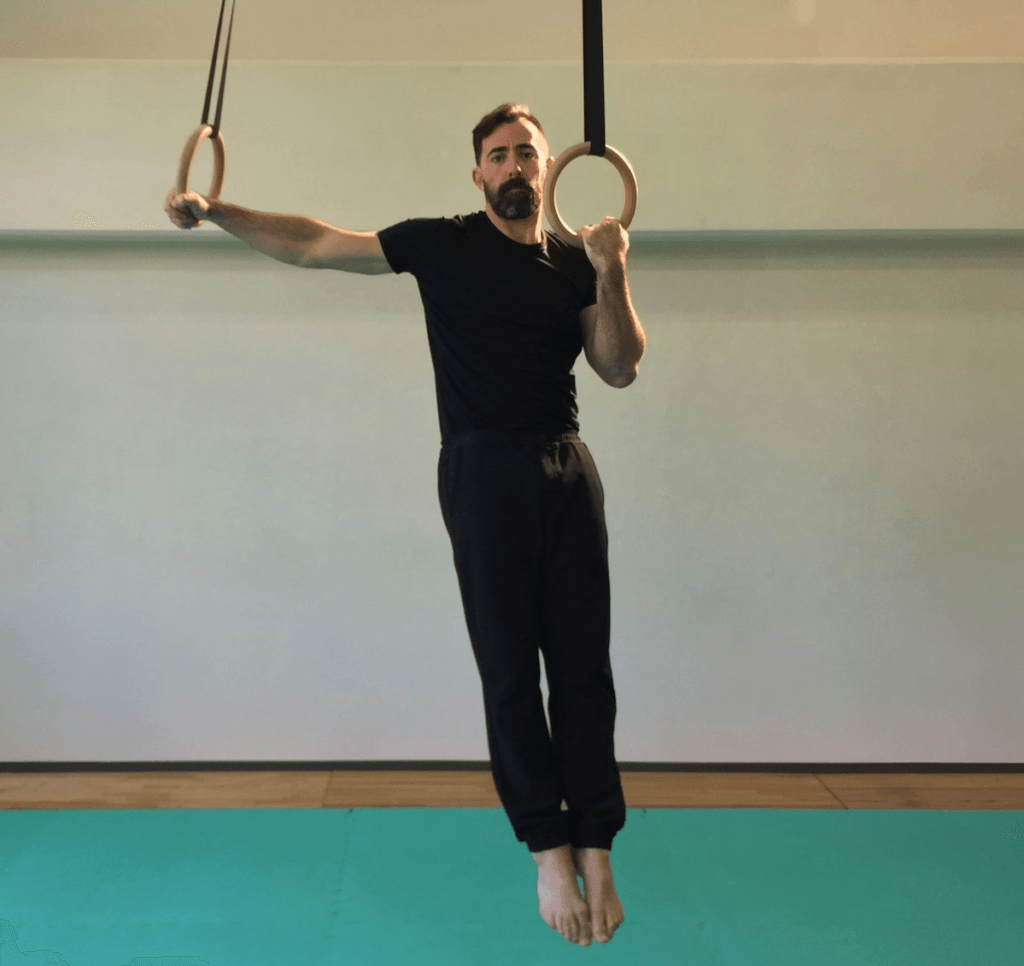
8. One Arm Pull Ups (1 Arm Pull Ups)
- Description: The ultimate test of upper body strength, requiring significant power and coordination.
- Benefits: Enhances overall upper body and core strength.
- How to Do It: Begin training with assisted one arm pull ups using a band or your other hand lightly touching the bar.
📘 Image from Convict Conditioning by Dragon Door Publishing A raw snapshot of bodyweight strength training—minimal gear, maximum grit. Explore the full program at Dragon Door Publishing

Progression Strategy for Pull Ups
- Start with Australian Pull Ups: Build foundational strength.
- Progress to Eccentric Pull Ups: Focus on the negative phase for strength development.
- Incorporate Assisted Pull Ups: Use bands or a partner.
- Master Chin Ups: Develop bicep and back strength.
- Perform Back Pull Ups: Target the larger back muscles.
- Advance to Towel Pull Ups: Boost grip strength.
- Work on Archer Pull Ups: Build unilateral strength.
- Challenge Yourself with One Arm Pull Ups: Reach the peak of pull up mastery.
💪 Want to build full-body strength with just the basics? Check out 3 Powerful Calisthenics Exercises: Why Push-Ups, Pull-Ups, and Squats Are All You Need for a no-equipment guide to mastering the Big 3.
Final Tips for Success
- Consistency is Key: Incorporate these pull up variations into your weekly workouts.
- Prioritize Form: Proper technique prevents injuries and ensures optimal muscle engagement.
- Progress Gradually: Only move to the next level when you can perform current exercises with good form.
Conclusion
Unlocking the journey of mastering 12 different pull-ups, from beginner to advanced, is a testament to your dedication and growth in strength. Whether you’re just starting with basic pull-up variations or pushing your limits with advanced moves, remember that progress is built on consistency and patience. Celebrate every milestone—each rep, each new technique mastered, and every challenge overcome.
Pull-ups are more than just an exercise; they symbolize resilience, discipline, and the power of persistence. Embrace the journey and know that with each step forward, you’re not only enhancing your physical abilities but also building confidence and inner strength.
So keep striving, keep climbing, and remember: every pull-up, no matter how simple or complex, is a victory. Your efforts today pave the way for your success tomorrow. Stay committed, stay inspired, and watch your potential unfold.
🤸♂️ Curious about calisthenics? Explore The Ultimate Calisthenics FAQ for everything you need to know—simple tips, smart progressions, and expert advice to help you move with confidence.
🔥 Gear to Help You Achieve Your Health and Fitness Goals 💪
If you’re looking for tools to enhance your fitness journey, check out this. Explore top-rated fitness gear on Amazon to enhance your workouts. Check out the latest picks here! 🛒 to support your workouts and progress.
🚀 Find equipment designed to boost strength, endurance, and overall performance!
⚠️ Short disclaimer: As an Amazon Associate, I earn from qualifying purchases.
People Also Ask: About Different Pull Ups
What muscles do different pull ups work?
- Different pull ups engage a range of upper body muscles.
- They primarily target the back (lats and traps).
- Biceps, forearms, shoulders, and core muscles also activate depending on the variation.
- The muscle focus shifts with grip width, hand position, and body angle.
Are different pull ups harder than regular pull ups?
- Some different pull ups are easier for beginners.
- Others challenge advanced lifters with more complexity or resistance.
- Difficulty increases with unilateral movement, explosive effort, or wider grips.
- Progression depends on strength, control, and technique.
How often should I do different pull ups?
- Aim to train different pull ups 2–3 times per week.
- Allow at least 48 hours between sessions for recovery.
- Volume and intensity should match your fitness level and goals.
- Rotate variations to avoid overuse and promote balanced development.
Do different pull ups help build muscle?
- Yes, different pull ups stimulate muscle growth through varied movement patterns.
- Changing angles and grips increases muscular tension and activation.
- They encourage progressive overload and minimize adaptation plateaus.
- Consistency and proper form are key for results.
For God so loved the word that He gave His only Son, that whoever believes in Him should not perish but have eternal life. – John 3:16

